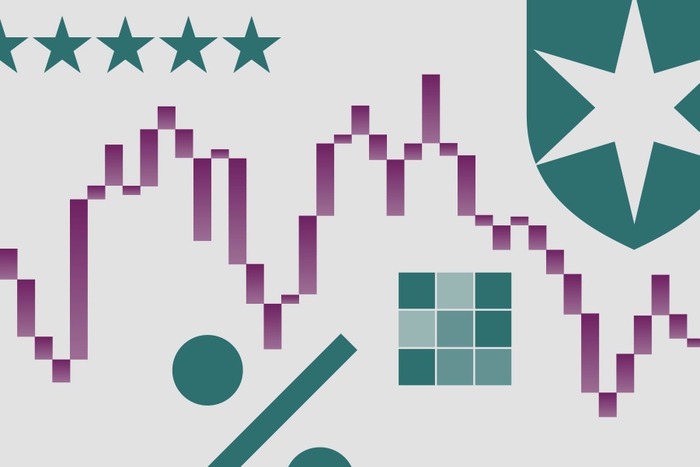
Per MSCI, emerging-markets stocks made up about 13% of the global stock market (using the MSCI All Country World Investable Market Index as a proxy) as of the end of 2020. When the MSCI Emerging Markets Index was launched in 1988, these stocks represented less than 1% of the world’s investable equity market capitalization.
Emerging markets are dynamic by definition. They have changed dramatically in the past three-plus decades, and the pace of change has only accelerated in recent years. Here, I’ll look at emerging-markets stocks’ long- and short-term performance, the most recent phase in their ongoing evolution, how their makeup may evolve in the future, and what this all might mean with respect to portfolio construction.
Back in the Saddle
The current version of the MSCI Emerging Markets Index was launched on Jan. 1, 2001. From its inception through the end of 2020, its annualized return amounted to 9.59% versus 6.02% for its developed-markets counterpart, the MSCI World Index. Though these headline performance figures are compelling, they belie the gut-wrenching volatility that has characterized this span. During this period, the emerging-markets index’s standard deviations of monthly returns and maximum drawdown were 21.59% and 61.59%, respectively. The comparable figures for the MSCI World Index were 15.62% and 54.03%, respectively. Emerging markets’ path to greater absolute returns has been a winding one.
Recent years have been particularly taxing for investors in emerging-markets stocks. From the time that the emerging-markets index’s cumulative performance peaked relative to developed markets in October 2010 (see Exhibit 1) through the end of 2020, the MSCI World Index outperformed the MSCI Emerging Markets Index by 6.28 percentage points on an annualized basis. But after 10 lean years, emerging-markets equities looked set to re-emerge in 2020. From the end of February 2020 through year-end, the emerging-markets index increased 31%, while its developed-markets counterpart rose 27.38%. Digging into the drivers of the benchmark’s recent performance yields some interesting insights into how its complexion has changed in recent years.

Then and Now
Exhibits 2 and 3 decompose the MSCI Emerging Markets Index into its constituent country and GICS sector exposures. It is readily apparent that the composition of this cohort has changed materially over the years. From the point of view of country membership, the most significant changes have been the decline in Brazilian stocks’ share of the portfolio (to 5.1% as of the end of 2020 from a peak of 16.2% in February 2010) and the increase in Chinese stocks’ share (which has risen to 38.4% from 18.1% during this same span).

In terms of sector composition, there’s been an even more significant shift in the index. In June 2008, energy and materials stocks represented a combined 40.2% of the MSCI Emerging Markets Index. As of the end of 2020, this figure had declined to 12.5%. Back in 2008, technology names accounted for 10.1% of the index portfolio; by the end of 2020, that figure had increased to 20.5%.
Of course, this evolution is only natural. The MSCI Emerging Markets Index is a broad, market-cap-weighted benchmark. As such, it will reflect the ebb and flow of firm-level fundamentals, investor sentiment, capital flows, and so on across these markets. Thus, the shift in the benchmark’s makeup represents the net result of all the above, as manifested in their relative performance. For example, from June 2008 through December 2020, the MSCI China Index gained 7.18% on an annualized basis, while the MSCI Brazil Index declined by 3.11% annualized, in U.S. dollar terms. These divergent paths speak to the effects of the commodity boom and subsequent bust on Brazil’s stock market (and currency) and the emergence of a pair of tech giants--Tencent Holdings (00700) and Alibaba Group (BABA)--in China. (The stocks now belong to the communications services and consumer discretionary GICS sectors, respectively, following a 2018 reclassification--another nod to the dynamism of indexing.)

This brings us to emerging markets’ 2020 reawakening. An attribution analysis of the MSCI Emerging Markets Index’s performance from the end of February 2020 through the year’s end reveals that the aforementioned Chinese tech behemoths combined to account for more than 3 percentage points of the index’s 31% gain. Rounding out the list of the index’s top five contributors are Taiwan Semiconductor (2330), Samsung (005930), and Meituan (03690), which collectively added about 7.5 percentage points to its performance over this stretch. The “new economy” stock rally is not a U.S.-only phenomenon--emerging markets are participating as well. The transition from a portfolio dominated by basic materials and energy giants to one led by emerging titans of the technology, communications, and consumer discretionary sectors has marked the most recent evolution of emerging stock markets, but what might come next?
In part 2 of this article, we will take a look at what the future of the emerging markets might hold.












.png)









